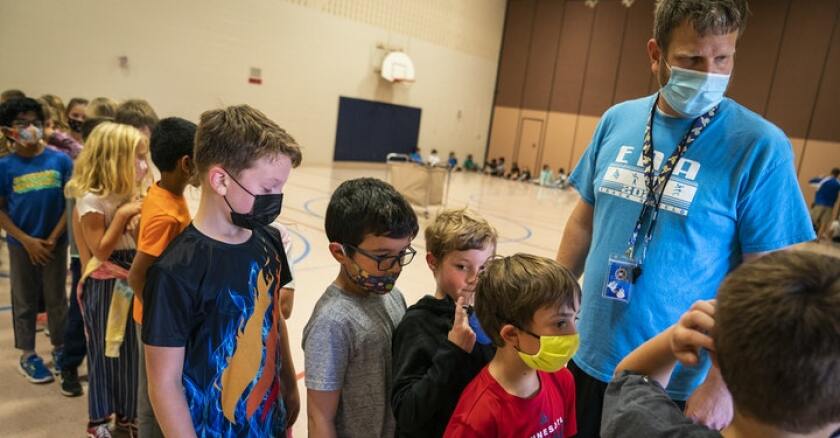Our long-term research with hundreds of teachers and school administrators reveals that persistent staffing shortages are leading professionals to feel burned out and to worry about students missing learning opportunities.
Labor Logistics: ‘Figure It Out’
Acute pandemic staffing challenges have plagued schools since the beginning of the 2021-2022 school year, when bus drivers were particularly hard to find. One principal told us that his school didn’t have 30% of its buses for nearly two months.
Administrators describe waking up with dread knowing they’ll have to scramble to find coverage for absent staff. Kendal, the assistant principal, explained being on call 24/7 during the omicron surge this January and February: “Communication about staff absences is constant. [We] email and text during evening, weekend, and early morning hours. I cover classrooms for staff who are out, and then try to find time to do the rest of my work at night.”
It was common for schools to have 30% of staff out during omicron. Such shortages required everyone to pitch in. In a school without custodians, the tech teacher cleared snow from sidewalks. A school nurse out for two months with long COVID meant others took care of sick children.
The demand for substitute teachers has exceeded supply during the pandemic, often significantly. Administrators describe “scraping the bottom of the barrel” with “less than ideal” substitute teachers. When none are available, teachers cover for other teachers during their prep hours, and paraprofessionals and administrators serve as substitute teachers.
In a pinch, schools place multiple classes together with a single adult. A teacher described the situation: “They combined two other classes with mine, having over 100 students in the auditorium. I was able to take attendance that period, that’s it. When this coverage happens, there isn’t much learning happening.”
Open positions remain unfilled. In the second week of school in September 2021, a reading specialist at one school was temporarily assigned to teach third grade. As of April 2022, she’s still there. Limited research exists on how students fare with substitutes, much less with a revolving door of substitutes or long-term substitutes.
One principal remarked: “When [a coffee shop] has staffing issues, they close for the day. When schools have staffing issues, we have to ‘figure it out.’”
Learning: ‘I Am Not Even Pretending’
Educators we speak with worry about how these shortages have affected students who were already struggling because of the pandemic. One principal said, “What students need more than anything else now is consistency and stability. These things are impossible to provide when 20% of the staff has COVID and students have to work with different people daily. This is particularly disruptive for students with special needs.”
When school counselors, reading specialists, English language teachers, social workers and other specialists are pulled to sub elsewhere, their services are canceled, often affecting students with the highest needs. Teachers describe some students waiting many months for their individualized educational plans to be implemented because there aren’t enough staff to provide diagnostic testing or services.
A shortage of teaching staff affects every student. One principal explained that learning stalls when “students in classes with revolving subs may spend the hour playing video games with no structure or learning happening.” Another added: “Sub plans are very basic. Kids are bored, and they deserve instruction that is engaging and differentiated. We’re unable to provide this right now.”
At the height of the omicron surge, when safety and basic coverage were all-consuming concerns, an elementary principal stated he was “not even pretending” to concentrate on learning at that point.
Emotions: ‘It Feels Awful’
The shortages make educators concerned for one another. A principal worried about his teachers’ resilience: “When so many staff are gone, educators are being called to flex [their duties and schedules] almost daily. They cannot find a stable rhythm and they cannot find feelings of success.”
One teacher described her concern about the pressure on administrators and other teachers in her district: “We have lost one principal to suicide, two took medical leaves at the beginning of the school year. One assistant principal has been in three different buildings to cover these leaves. All this and the district is still telling us to accelerate, not focus on what kids are missing. How do we do this?”
Looking ahead, educators wonder how schools will cope with staffing challenges both as the pandemic winds down and beyond. One teacher stated: “We can only cover so much, and it doesn’t sound like a lot of people are signing up for this job. … I worry about the entire public school system.”
This article is republished from The Conversation under a Creative Commons license. Read the original article.
Related Articles













